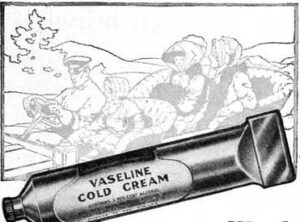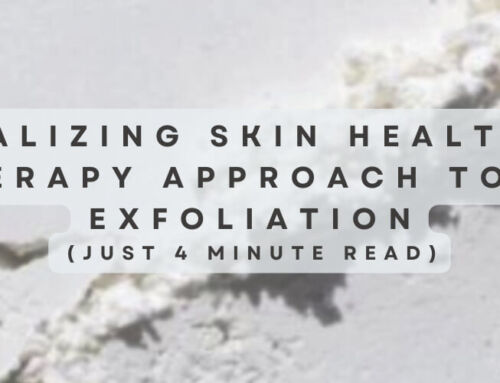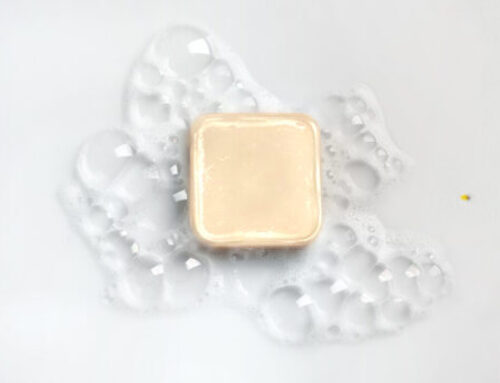Medieval maidens used chickpeas, barley, and almonds to tighten their skin. The Greeks used herbs and honey to cleanse and brighten. Egyptians used close to 21 different vegetable oils to protect their skin from the dry desert climate, according to the expert Judith Illes. And countless early civilizations were fans of the soothing milk bath.
Before the mass-marketing of products, people cared for their skin from recipes and secrets passed down from mothers, friends, and neighbors. But eventually, science walked in. We’ve come a long way since the beauty routines of days passed.
Let’s take a look at how corneotherapy–repairing the skin’s barrier function for a healthy balance of the entire skin–has served as the soul of effective formulations throughout the last century.
1st Generation Corneotherapy
19th Century
Nestled inside any dear grandmother’s mirrored cupboard, you’d be hard-pressed not to find petroleum jelly. Discovered serendipitously in 1859 by oil workers curious about the by-product of the drilling they were working on and how it seemed to heal their cuts and scrapes, Vaseline was invented and became a hit in skincare.
First-generation corneotherapy contained a lot of petroleum jelly and mineral oils, two natural raw materials made from crude oil. Those “healing” properties? Occlusive agents–large molecules that are unable to penetrate the skin. They sit right on the surface, acting like a protective layer that is impenetrable to other substances and which doesn’t allow water to leak out from the skin and evaporate into the air (which is a natural process of the Permeability Barrier for balanced hydration–but they didn’t know that yet).

Vaseline Cold Cream
On the other hand, however, we understand now that occlusives signal the skin’s repair process to turn off and are not biodegradable in the skin. This makes petroleum a better measure for skin protection such as for the extreme cold, and, with the invention of better cosmetics growing, moved from the bathroom to the first aid cupboards.
20th Century
Another important discovery was that the stratum corneum–the outer layer of the skin– was more than just “dead cells” – as has long been assumed – but rather a completely inert barrier.
“In my paper of 1964, which established that the horny layer was a tissue made up of corneocytes, I could not have dreamed of the spectacular advances that have been brought to light by an international school of corneobiologists. I did not go any further than asserting that the stratum was a cellular barrier, the end product of a viable epidermis whose raison d’etre was to produce the dead stratum corneum… I did not have the vision to foresee that the stratum corneum would become very much alive.” —Albert M. Kligman, MD
2nd Generation Corneotherapy
Suddenly, your mother’s skincare repertoire was filled with Olay, Pond’s, and Nivea to moisturize the skin–which has continued through the brands we see in cosmetic and drug stores today.
As research dived deeper into skin biology, new studies began to show that the skin has its own arsenal of NMF which consists of hydrating humectants like hyaluronic acid, lactic acid, and more (read all about the NMF here).
So, in turn, second generation corneotherapeutics aimed to increase moisture, not through occlusives, but by humectants–these water-binding substances.
These products tried (and still try to this day) to reproduce the natural moisturizers, but here’s the problem: They add in NMF but they either leave out the lipid components or they’re not in the right ratio (1:1:1). They also include an array of oils that are not physiological (the type your skin naturally produces).
Or worse, they have silicones to keep the water in the skin and surfactants to wash things away (the bad and the good). So they feel good for about four hours until the humectants wash off and the emulsifiers become buried in the skin. This causes your skin to become addicted because it can’t produce it on its own.
3rd Generation Corneotherapy
Dermatologist Dr. Albert Kligman and his colleagues discovered in the 70s that all skin problems (e.g., acne, rosacea, atopic dermatitis) are an indication of an inflamed stratum corneum and, finally, through extensive research, skincare begins to take both a personalized and an “outside-in” approach to healing. The result? Effective formulations that set out to restore the stratum corneum, not just make it temporarily feel better.

dermaviduals® skincare line
This applied corneotherapy, i.e. dermaviduals, is based on 3 basic principles:
Individualized care: The certified corneotherapist does an extensive analysis of your skin to discover your unique skin needs and find the ideal treatment.
Protection: Third-generational corneotherapy understands that the stratum corneum is a two-compartment system (read more here)–and understands how to target what is missing from each compartment with bioidentical substances (substances naturally found in the skin) to restore balance and strength to the stratum corneum–because a faulty barrier cannot absorb and accept the perfect nutrients properly.
Prevention: Once restored, managing and perfecting the skin with a skincare routine optimized for your unique skin wishes.
These products promise to respect the skin barrier by only containing ingredients naturally found in the skin–particularly the lipid components ceramides, various fatty acids and also cholesterol for a balanced 1:1:1 ratio that your skin needs. They are always free of artificial ingredients like fragrance, dyes and silicones.
As more scientific findings emerge, there will be new and exciting ways to administer care and therapy of your skin. We’ll see more therapeutic liposomes to combat inflammatory skin conditions and the ability to send key actives exactly where they need to go in the skin layers.
For more on the bespoke, next-generation skincare at dermaviduals, head here.
If you have a spa or clinic in New York state and you’d like to add dermaviduals skin therapy to your offerings, give us a call at 1-888-753-2231 or send us an email!






